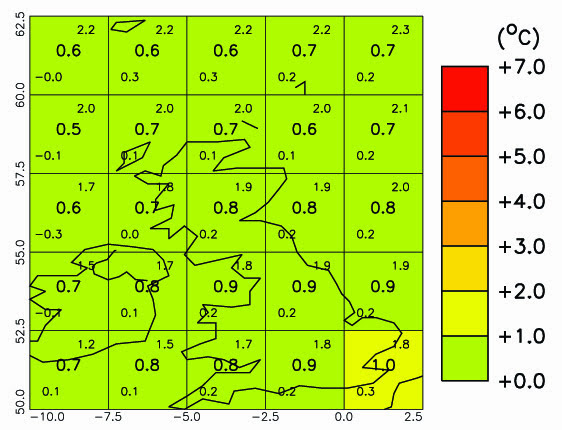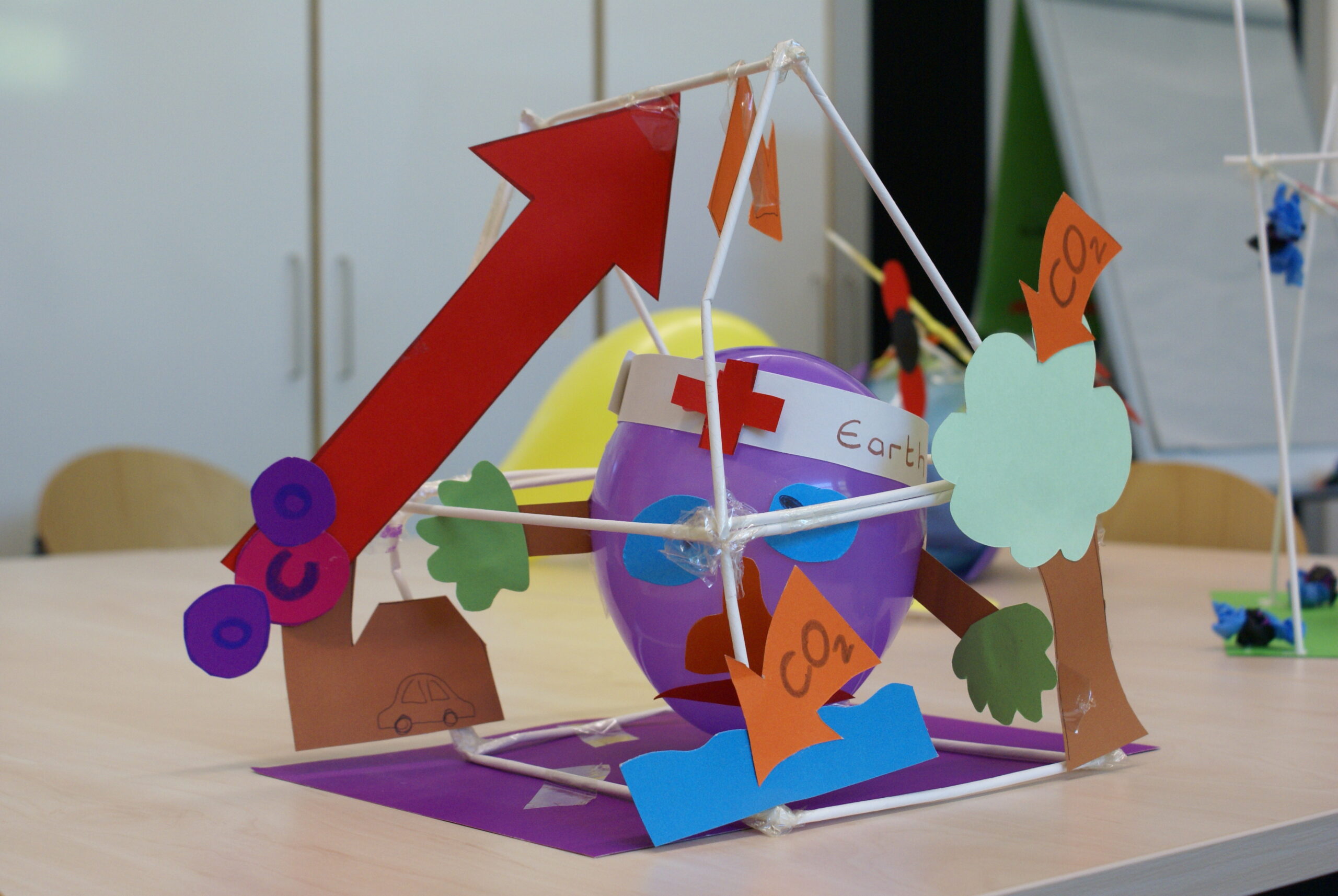Cumulonimbus clouds
Lightning
Thunder
How far away is the thunderstorm?
Are thunderstorms dangerous?
Facts and figures
Quick test!
Cumulonimbus clouds
Most thunderstorms are associated with towering clouds known as cumulonimbus. The right conditions for the formation of a thunderstorm are (a) unstable air and (b) a mechanism for causing air to rise.
Air is said to be unstable when a ‘parcel’ of air continues to rise of its own accord after being given an upward impetus. This instability is the result of a rapid fall of temperature with height as well as a considerable amount of moisture. The mechanism may be provided by a sufficiently warm surface; the air near the surface being forced to rise over higher ground; or instability in the large-scale ascent within a front.
As an example, on a summer’s day, the land is warmed by the sun, and as the air just above becomes warmer it starts to rise. As it rises it cools, and, if cooled sufficiently, cumulus clouds form at the condensation level. These small, white puffy clouds grow larger and larger as the temperature of the ground increases, causing more warm air to rise.
After a time, the top of the cloud turns to ice (usually below a temperature of -20 °C) and streams away in the winds at the level of the cloud top, giving it a characteristic anvil shape.
Lightning
Lightning is a large electrical spark caused by electrons moving from one place to another.

Electrons cannot be seen, but when they are moving extremely fast, the air around them glows, causing the lightning flash. The actual streak of lightning is the path the electrons follow when they move.

An atom consists of three basic parts, a proton (which has a positive charge), a neutron (which has no charge) and an electron (which has a negative charge). Electrons cling to the positively charged centre of the atom because they have a negative electrical charge. During a thunderstorm, some of the atoms in the cloud lose electrons while others gain them.
When a cloud is composed entirely of water droplets, there is very little transfer of electrons. As a storm cloud grows in height, the temperature of the water droplets higher up falls. They continue in the liquid state below 0 °C as super-cooled water, but eventually they begin to turn to ice, usually at a temperature below -20 °C. These ice particles often collide and the smaller particles lose an electron to the larger, thereby gaining a positive charge.
The small particles are propelled towards the top of the cloud by strong internal winds while the larger particles start to fall. This causes the top of the cloud to develop a strong positive charge.
The larger, negatively charged, ice particles begin to ‘capture’ super-cooled water droplets, turning them instantly to ice and thereby growing, some reaching a sufficient size to start falling.
This leads to the base of the cloud becoming negatively charged which, in turn, induces a positive charge on the ground below. In time, the potential gradient between cloud and ground, or between adjacent clouds, becomes large enough to overcome the resistance of the air and there is a massive, very rapid transfer of electrons, which appears as a lightning flash.
There are several types of lightning, all of which are made up of different parts and none of which are alike. Lightning that shoots from the cloud to the ground is made up of four main parts: a stepped leader, upward streamers, return strokes and dart leaders.
As negative charges collect at the base of the cloud, they repel the electrons near the ground’s surface. This leaves the ground and the objects on it with a positive charge. As the attraction between the cloud and the ground grows stronger, electrons shoot down from the cloud. The electrons move in a path that spreads in different directions – like a river delta. Each step is approximately 50 metres long and the branching path is called a stepped leader. Further electrons follow, making new branches. The average speed at which the stepped leader cuts through the air is about 270,000 miles per hour.
As the stepped leader approaches the ground, positive electrical sparks rise from tall objects such as trees and buildings. These sparks are known as upward streamers. When the stepped leader meets the upward streamer, the lightning channel is completed. When the lightning channel is complete, the electrons in the channel rush towards the ground. This is the return stroke which lights up the channel. The first electrons to reach the ground light up the bottom of the channel. The upper part of the channel glows as the electrons move rapidly down it. Therefore, the light from the flash starts at the ground and moves upwards. The branches of the stepped leader are also lit up, but not as brightly as the main channel as there are less electrons present. The lightning flash ends when there are no electrons left in the channel.

If lightning flickers, it is probably because there has been more than one return stroke. Following a lightning flash, the lightning channel is momentarily empty and it is then possible for electrons from another part of the cloud to enter it. The movement of the electrons into the channel is called a dart leader. It causes another return stroke to occur. The repeated return strokes and dart leaders make the lightning appear to flicker because of the great speed at which they occur.
Thunder
The word ‘thunder’ is derived from ‘Thor’, the Norse god of thunder. He was supposed to be a red-bearded man of tremendous strength; his greatest attribute being the ability to forge thunderbolts. The word Thursday is also derived from his name.
Thunder is the sharp or rumbling sound that accompanies lightning. It is caused by the intense heating and expansion of the air along the path of the lightning. The rumble of thunder is caused by the noise passing through layers of the atmosphere at different temperature. Thunder lasts longer than lightning because of the time it takes for the sound to travel from different parts of the flash.
How far away is the thunderstorm?
This can roughly be estimated by measuring the interval between the lightning flash and the start of the thunder. If you count the time in seconds and then divide by three, you will have the approximate distance in kilometres. Thunder is rarely heard at a distance of more than 20 km.
Are thunderstorms dangerous?
Most people are frightened by the crackles and rumbles of thunder rather than the flash of lightning. However, thunder cannot hurt anybody, and the risk of being struck by lightning is far less than that of being killed in a car crash. Ninety per cent of lightning discharges go from cloud to cloud or between parts of the same cloud, never actually reaching the earth. Most of the discharges that do strike the ground cause little or no damage or harm. Lightning takes the shortest and quickest route to the ground, usually via a high object standing alone.

- Lightning strikes lone trees on high ground – don’t shelter here!
- You are safe inside a car. The electricity is carried through the metal of the car itself and to the ground through the tyres
- If you get stuck in the open, make yourself low by crouching down, or run for shelter
- Lightning strikes aircraft, but the people inside are safe because it runs around the outside, though it can make a hole in the superstructure
- Lightning strikes tall buildings, but they have lightning conductors to carry the electricity harmlessly to the ground
Facts and figures
- Number of thunderstorms occurring at any given moment: 2,000
- Number of lightning strikes every second: 100
- Number of lightning strikes a day: 8 million
- The average flash would light a 100 watt light bulb for 3 months
- The average lightning stroke is six miles long
- A typical flash of folk lightning lasts for about 0.2 seconds
- The temperature of lightning’s return stroke can reach 28,000 °C. The temperature on the surface of the sun is around 6,000 °C
- The Empire State Building in New York has been struck by lightning as much as 48 times in one day!
Quick test!
Here are a few beliefs about thunder and lightning. Test yourself with the following statements – are they true or false? Some of the answers can be found in the text.
- It is dangerous to leave doors and windows open during a lightning storm.
- When caught out in the open during a thunderstorm, take shelter under a tree.
- You are safer in the city than in the countryside during a storm.
- When a thunderstorm occurs while you are driving your car, it’s best to get out and away from the car.
- Lightning never strikes twice in the same place.
- Thunder can be just as dangerous as lightning.
Web page reproduced with the kind permission of the Met Office



